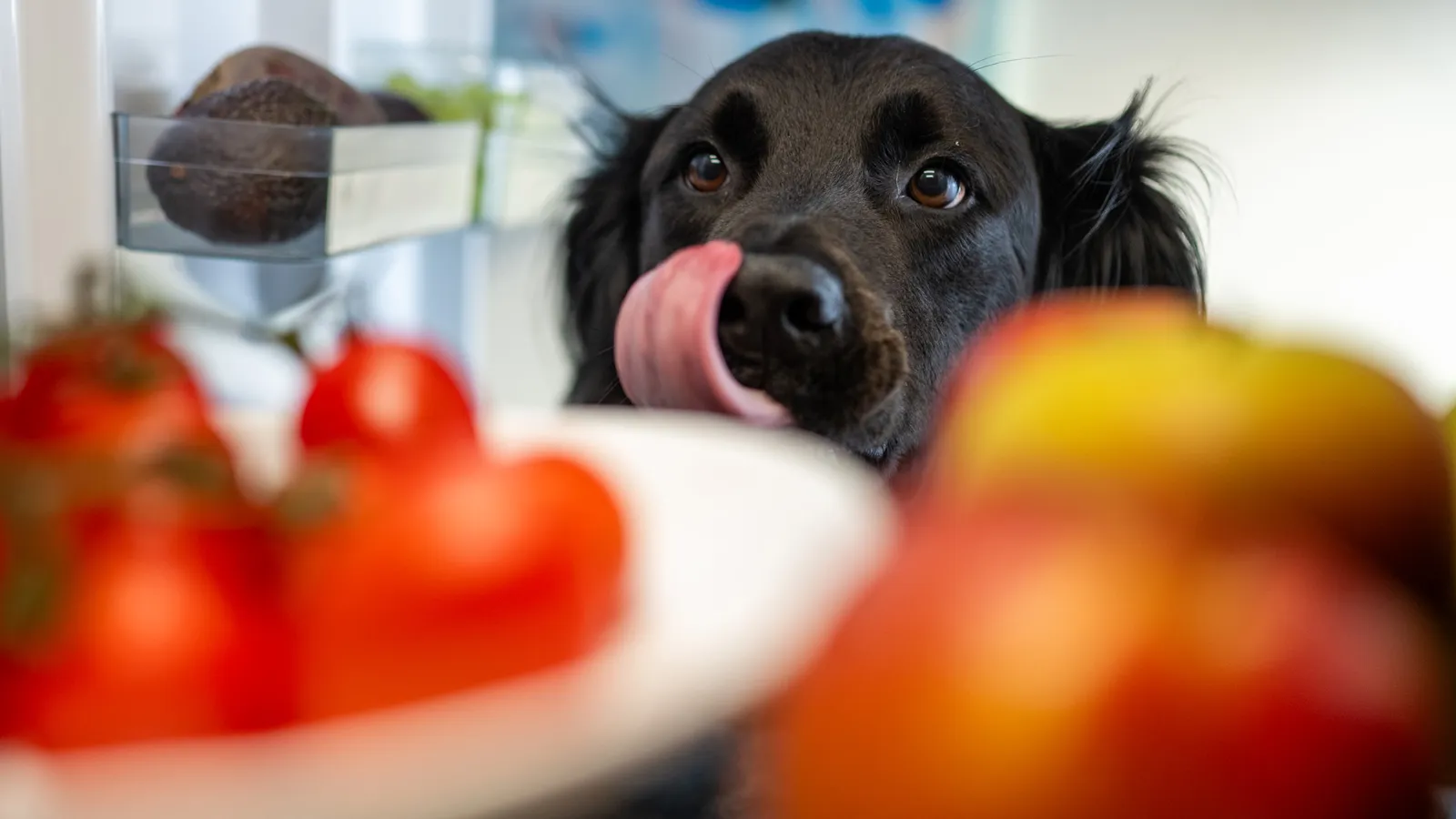Why pet owners are spending thousands of dollars on 'human-grade' food
As consumers claw for luxury pet food, dogs and cats are eating as well as humans.

When Amy Barkham adopted her dog named Wednesday, she already knew she wanted to feed the German Shepherd-Husky mix premium dog food. She scoured websites, and read labels and reviews to select UK brands of kibble that positioned themselves as grain-free, nutritionally balanced and bursting with the goodness of top-notch ingredients, including free-range chicken and "vegetables and botanicals that match your dog's ancestral diet".
Wednesday, whom Barkham describes as "the biggest bundle of energy I have ever come across", was uninterested in the grain-free kibble her owner had searched for high and low. (She preferred to play with her plush toy pumpkin instead.) After a month, she began refusing the food entirely, dramatically losing weight during her hunger strikes.
Twenty-three-year-old Barkham wasn't sure where to turn next. These brands were already running her upwards of £50 ($63) for 15kg (33lb) bags of dry food, which lasted about five weeks. What else could her dog possibly want? Would it cost even more?
The answer: human-grade dog pet food, with quite the eye-watering price tag. And as the market offerings grow, this food is increasingly attracting both dog and cat owners.
The term "human grade" is not new. Early definitions were murky: some consumers simply equated it with better quality, or the idea that if it's good enough for humans, it must be good for their pets. Now, new standards set in the past two years in the US, UK and Europe mean tighter regulations. "Human-grade" encompasses pet food manufactured in a manner consistent with regulations for ready-to-eat human food products.
Barkham discovered the option when she attended a dog show in London in 2022: fresh, gently-cooked dog food by the UK brand Tuggs, which includes recognisable vegetables such as broccoli and carrots as well as proteins including cod, pork, beef, chicken – even insects. She appreciated both the nutritional benefits it touted as well as its sustainability pledge. Although she struggled to envision Wednesday taking to a food containing insect protein when she had rejected kibble, Barkham rolled the dice. Wednesday loved it.
Freshly made and then flash frozen, Wednesday's food now arrives in freezer pouches and insulated packaging. Barkham now sets aside £150 ($190) a month for her direct-debit delivery of Wednesday's food and treats, with the food alone costing around £90 ($114) for four weeks. It's a significant price increase, but Barkham says making room in the budget for a high-end food that satisfies all Wednesday's – and her own – needs is worth it, even if it comes with, "a few small sacrifices like less takeaways per month". The biggest, she says, is, "due to us living in a small flat with a small freezer, we now only get one drawer for human food".
Many dog and cat owners have seen the adverts from brands across the world – Perfect Bowl, Smalls, The Farmer's Dog, Elmut and more – touting nutrient-rich pet food that might not look terribly different from what's on their own plates. Increasingly, owners are ordering these products, largely from subscription-based ecommerce start-ups, and giving into the visceral urge to give their beloved pets the most wholesome, nutritious food they can afford – even if it trumps financial logic.
From table scraps to pet chefs
The American Pet Products Association estimates Americans spent $58.1bn (£46bn) on pet food and treats in 2022, and UK Pet Food valued the UK expenditure in 2023 at £3.8bn ($4.8bn). But the mind-boggling size of the modern-day pet food industry – and its premium tier – is relatively new.
"For much of the 20th Century, pets were fed kitchen scraps, such as leftover meat and bones as these foods were low cost and more easily available," says Natalia Ciecierska-Holmes, a PhD researcher who studies alternative diets for dogs and humans at the University of Adelaide, Australia, and the University of Nottingham, UK.
Canned horse meat was a popular food for dogs in the 1920s, she explains, and commercial pet food companies weren't founded until the 1950s, selling dry kibble that was derived from extruding dry and wet ingredients into a shelf-stable product.
Ciecierska-Holmes points to a defining moment in the shift towards alternative pet foods: a 2007 global recall of commercial pet food. The US Food and Drug Administration (FDA) found wheat gluten contaminated with melamine and cyanuric acid, had made its way into the supply, leading to the deaths of 14 cats and one dog. "These recalls heightened distrust in the commercial pet food system [and spawned] a desire for increased control over where these ingredients come from," she says.
Today, many pet food manufacturers tout specialised ingredients and offer up blends for special diets. Many offer wild game, such as "such as venison, rabbit, and kangaroo, which are perceived as more sustainable", she says.
One of the earliest premium trends to emerge in this upmarket segment was "raw feeding". According to Ciecierska-Holmes, "raw feeding originated as a homemade diet, with owners sourcing their own ingredients". Today, the practice has been commercialised as "consumers can choose the convenience of pre-prepared raw food available from specialist raw pet food brands and growing numbers of 'pet butchers'."
Only the best for man's best friend
The way people shop and prioritise certain products in the massive pet food market, says Ciecierska-Holmes, is shaped by changing societal and cultural perspectives around how humans view animals.
Sean B Cash, an economist and associate professor in global nutrition at the Friedman School of Nutrition Science and Policy at Tufts University, US, agrees. Essentially, he says, owners' growing concern about what they feed their pets boils down to their increasing anthropomorphism or "humanisation" of animal companions.
During his research about the determinants of pet food purchasing decisions, Cash and his colleagues found what they termed a "health prioritisation gap". In other words, nearly half of the pet owners surveyed placed a higher priority on buying healthy food for their pets than for themselves.
Brands tout unique selling propositions ranging from the creative and research-informed, such as fresh preparation, alternative proteins and transparent supply chains; to the niche, like gluten-free pet food and Kosher foods for Passover
Now, along with tugging at the heartstrings of dedicated pet owners who only want the best for their companions, luxury pet food brands are also leveraging precise positioning to evoke the benefits they'd want for themselves: labelling their products with words such as "human-grade", "natural", "grain-free" and "holistic" – even though, says Ciecierska-Holmes, many of these terms are not regulated.
In this quest for differentiation, brands tout unique selling propositions ranging from the creative and research-informed, such as fresh preparation, alternative proteins and transparent supply chains; to the niche, like gluten-free pet food, Kosher foods for Passover and dog food with turkey, spinach and cranberry. (As Cash likes to call it, "Not just turkey, but the whole Thanksgiving spread.")
Harry Bremner, founder of Tuggs – the brand Barkham feeds Wednesday – says the economic success of "human-grade" pet food mirrors wellness trends in human industries. He adds some consumers say they're interested in brands that prioritise sustainability to reflect their own lifestyle concerns. Consumers know pets "have a carbon paw print similar to their own… and this is driving [them] to purchase more sustainable products," says Brenmer.
'It's dinner time'
Consumers ordering up chef-curated pet food delivered to their doors weekly may feel good about their purchasing decisions, especially when their dogs and cats dig in. And that's important for peace of mind. Yet experts caution the trend may be more for the owner than their animal best friend.
A more expensive specialty diet doesn't always guarantee better nutrition, many believe. Some pet food trends, such as a whole-food diet, are rooted in veterinary research. "There are documented [immune system] health benefits to feeding dogs whole-food diets as compared to processed foods like kibble," says California-based Veterinarian, Patrick Mahaney, referring to a clinical trial published in 2022. But whether human-grade pet food is truly boosting a pet's nutrition in a way other food can't – or even creating fewer emissions on its way to the bowl – isn't as cut and dry.
Still, growing sales and more entrants into the upmarket space show consumers are clawing for it. And for Barkham, the transition has been the right choice, even with the price. Seeing her pup's consistent weight, shiny coat, healthy stool – and most of all, her happiness – is worth it.
"As soon as it hits 7pm," she says, "Wednesday starts to sing us the song of her people to make us aware it's her dinner time."
-bbc






